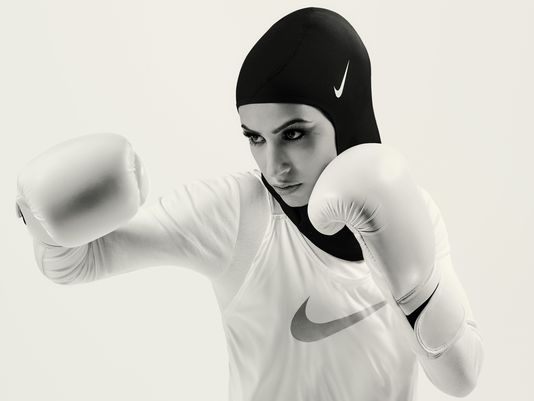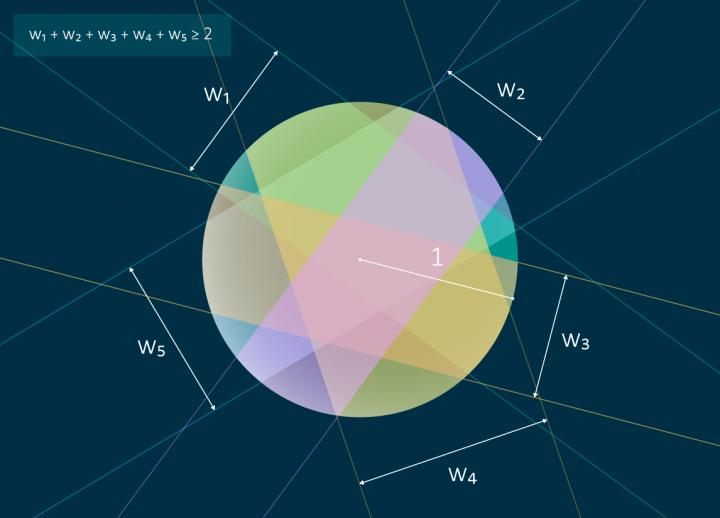2017 Was Full of Problems, Here Are Some That Got Solved
Athletic hijabs, cancer cures, magic glasses, and more.

A problem shared may be a problem halved—but a problem solved is a story worth sharing. We’re quick to decry knotty issues, but sometimes slow to acknowledge or celebrate solutions when we find them. Even among a sea of troubles this year, problems got solved. Here are some of our favorite solutions.
Glasses That Give Sight to the Legally Blind
They might look a little bulky, but they can help you see like nothing else. Resembling a video game headset, eSight glasses have an built-in camera that captures everything in the wearer’s line of sight. They are designed to help those who are legally blind (20/200 vision, with correction), rather than those who cannot see at all. Complicated technology processes people’s faces, newspapers, books, menus, and everything else to appear as they might to someone with normal sight. (And then some, as you can reverse the colors, zoom in 14 times, and take photographs.) At $9,995 they aren’t cheap, but they’re less expensive than earlier models, which bodes well for future iterations.
Water Brothers Animation from GreenWaveORG on Vimeo.
Vertical Ocean Farms That Nourish Humans and the Planet
Bren Smith, a Newfoundland fisherman, in a quest for an alternative to traditional aquaculture and fishing methods, decided to attempt underwater vertical farming. In his system, horizontal ropes on the surface connect to towers of aquaculture that stretch from the seafloor on up, variously supporting seaweed, scallops, mussels, clams, and oysters. There are other benefits, beyond seafood: His 40-acre farm in Long Island also serves as a storm-surge protector and home for variety of other underwater creatures. From the shore, it’s virtually invisible, but it shouldn’t be overlooked.

A Hijab for Muslim Athletes
Athletes shouldn’t have to choose between their faith and their sport—but Muslim women who wear the hijab often find themselves caught between the two. Until this year, the International Basketball Federation (FIBA) put a ban on hijabs in professional basketball, which excluded many from the sport. Even when they are permitted to wear them, athletes worry that they’ll come loose, and struggle with overheating and the weight of the fabric around their faces. This year, Nike developed a high-performance hijab for Muslim athletes, covered in tiny, invisible holes that allow the fabric to breathe. The hijab can be tightened for the sports that need a closer fit—figure skating, say—and has a long back to keep it in place in the thrum of competition.
A Cure for Childhood Blood Cancer?
For a long time, the blood cell cancers leukemia and lymphoma were death sentences. Usually beginning in the bone marrow and affecting white blood cells, they are most common cancers in children and adolescents, accounting for nearly one in three cases. Slowly, however, treatment has improved. Chemotherapy often helps, sometimes beating the cancer into remission or for good. This year, however, the FDA approved a brand new therapy, marketed as Kymriah, that treats a kind of acute blood cancer by using the body’s own white blood cells. A particular kind of T-cells are removed, genetically enhanced, and then transferred back to the bloodstream. It’s early yet, but this solution looks promising—in one trial, 27 out of 30 patients achieved complete remission, sometimes even following unsuccessful stem cell transplants.
Elevators That Move All Over the Place
Elevators have worked pretty much the same way for decades—pulleys, up and down. They’re reliable, but what if you want to zip from one side of a building to another, or have elevators pass each other along the way? New MULTI elevators, expected to be rolled out in 2021, use the kind of magnetic levitation tech common to high-speed trains. This allows the rope-free cars to travel in all directions, reducing wait times and potentially changing the future of skyscraper design.

A 44-Year-Old Math Problem
You have a ball and you cover it with bands of fabric until its entire surface has been swaddled. Now, put the width of those bands together, and add them all up. In 1973, the mathematician László Fejes Tóth said that, however small the sphere, the combined width will always be at least π times the radius of the sphere. But this was just a conjecture. In September 2017, 44 years on, Zilin Jiang, from the Israel Institute of Technology, and Alexandr Polyanskii, from the Moscow Institute of Physics and Technology, found a proof that solves the problem. “Fejes Tóth’s problem has fascinated mathematicians in the field of discrete geometry for over 40 years,” Polyanskii said in a statement. “This problem turned out to have an elegant solution, which we were fortunate to find.”










Follow us on Twitter to get the latest on the world's hidden wonders.
Like us on Facebook to get the latest on the world's hidden wonders.
Follow us on Twitter Like us on Facebook